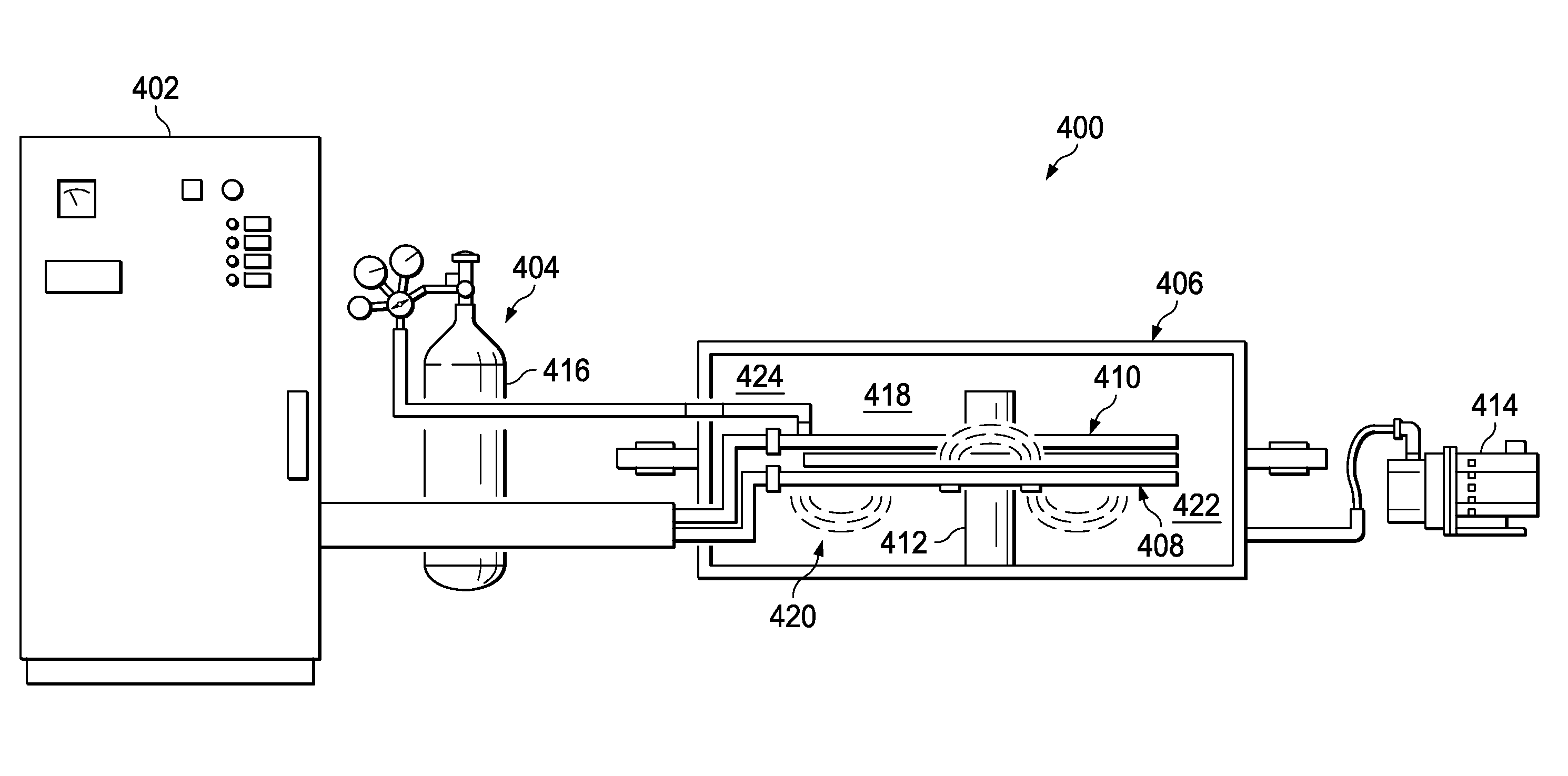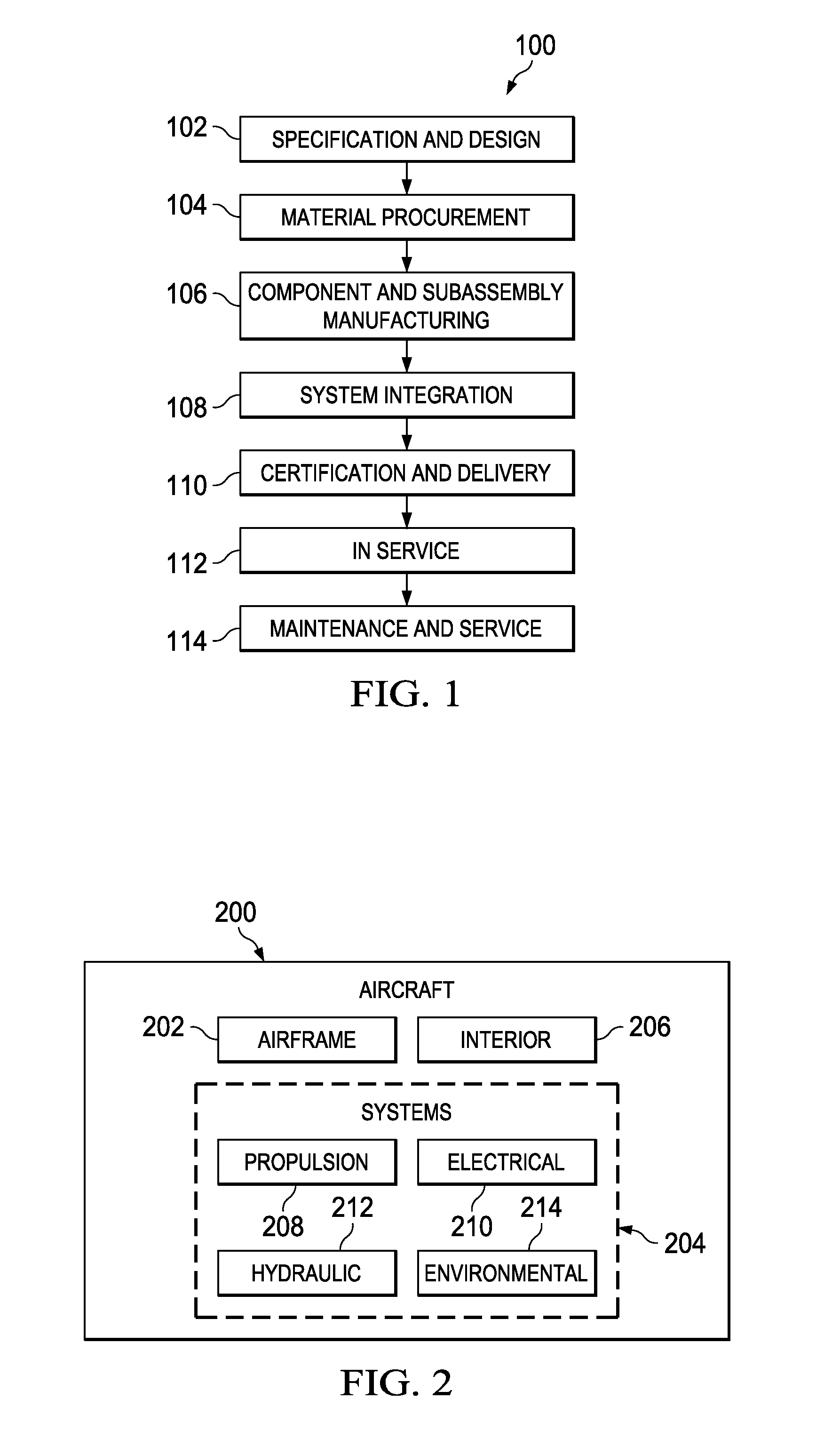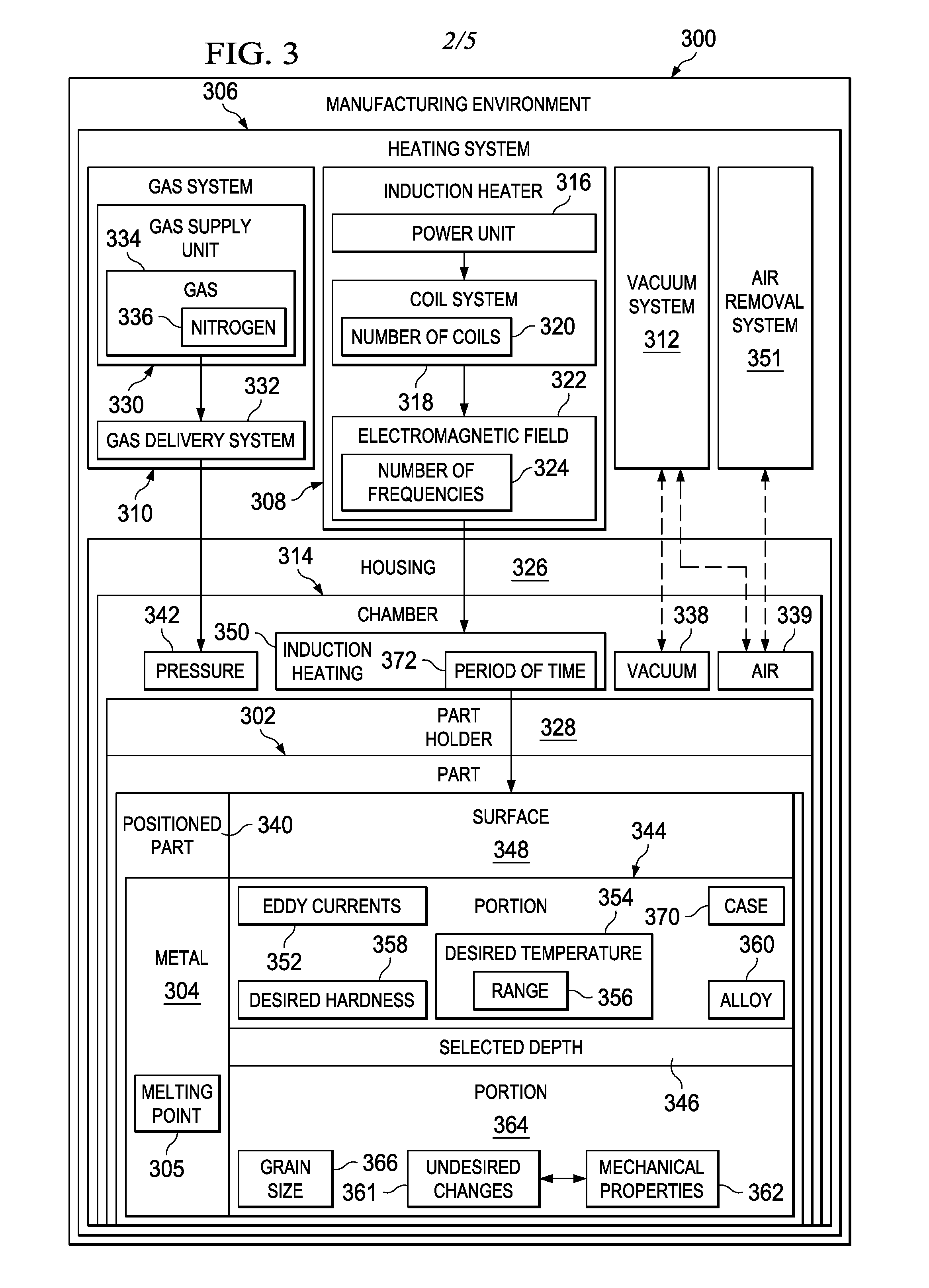High Temperature Nitriding of Titanium Parts
a technology of titanium parts and high temperature nitriding, which is applied in the field of manufacturing parts, can solve the problems of titanium parts not having titanium parts may not be able to carry larger applied loads, and titanium parts may not have the ability to achieve the desired surface hardness, etc., and achieve the effect of reducing undesired changes in mechanical properties
- Summary
- Abstract
- Description
- Claims
- Application Information
AI Technical Summary
Benefits of technology
Problems solved by technology
Method used
Image
Examples
case 610
[0068]Case 610 may take the form of hardened case 611 in this illustrative example. Hardened case 611 may be formed from portion 608 of gear 600 through the use of heating system 306 in FIG. 3. Hardened case 611 may provide increased wear resistance for gear 600 and may allow gear 600 to carry increased loads.
[0069]As depicted in this example, gear 600 may be inductively heated such that case 610 is formed for tooth 602 and for portion 620 and portion 622 of wheel 604. However, in other illustrative examples, tooth 602 may be inductively heated using heating system 306 in FIG. 3 such that case 610 is not formed on portion 620 and portion 622 of wheel 604. In other words, heating system 306 in FIG. 3 may be used to inductively heat gear 600 such that only portions of surface 612 are heated to depth 616.
[0070]With reference now to FIG. 7, an illustration of a table of test results from heating a part is depicted in accordance with an advantageous embodiment. In this illustrative examp...
PUM
| Property | Measurement | Unit |
|---|---|---|
| pressure | aaaaa | aaaaa |
| depth | aaaaa | aaaaa |
| temperature | aaaaa | aaaaa |
Abstract
Description
Claims
Application Information
 Login to View More
Login to View More - R&D
- Intellectual Property
- Life Sciences
- Materials
- Tech Scout
- Unparalleled Data Quality
- Higher Quality Content
- 60% Fewer Hallucinations
Browse by: Latest US Patents, China's latest patents, Technical Efficacy Thesaurus, Application Domain, Technology Topic, Popular Technical Reports.
© 2025 PatSnap. All rights reserved.Legal|Privacy policy|Modern Slavery Act Transparency Statement|Sitemap|About US| Contact US: help@patsnap.com



